Accessories
To keep your glasses in tip-top shape, we’ve got accessories for any scenario—the traveling glasses, the smudgy glasses, the I’ve-got-lots-of-glasses-I-forgot-about-this-pair-of glasses, and more. Keep ‘em clean, keep ‘em safe!


Our easy-breezy super-smarty guide to everything from progressives to eyewires to monocles.
To keep your glasses in tip-top shape, we’ve got accessories for any scenario—the traveling glasses, the smudgy glasses, the I’ve-got-lots-of-glasses-I-forgot-about-this-pair-of glasses, and more. Keep ‘em clean, keep ‘em safe!
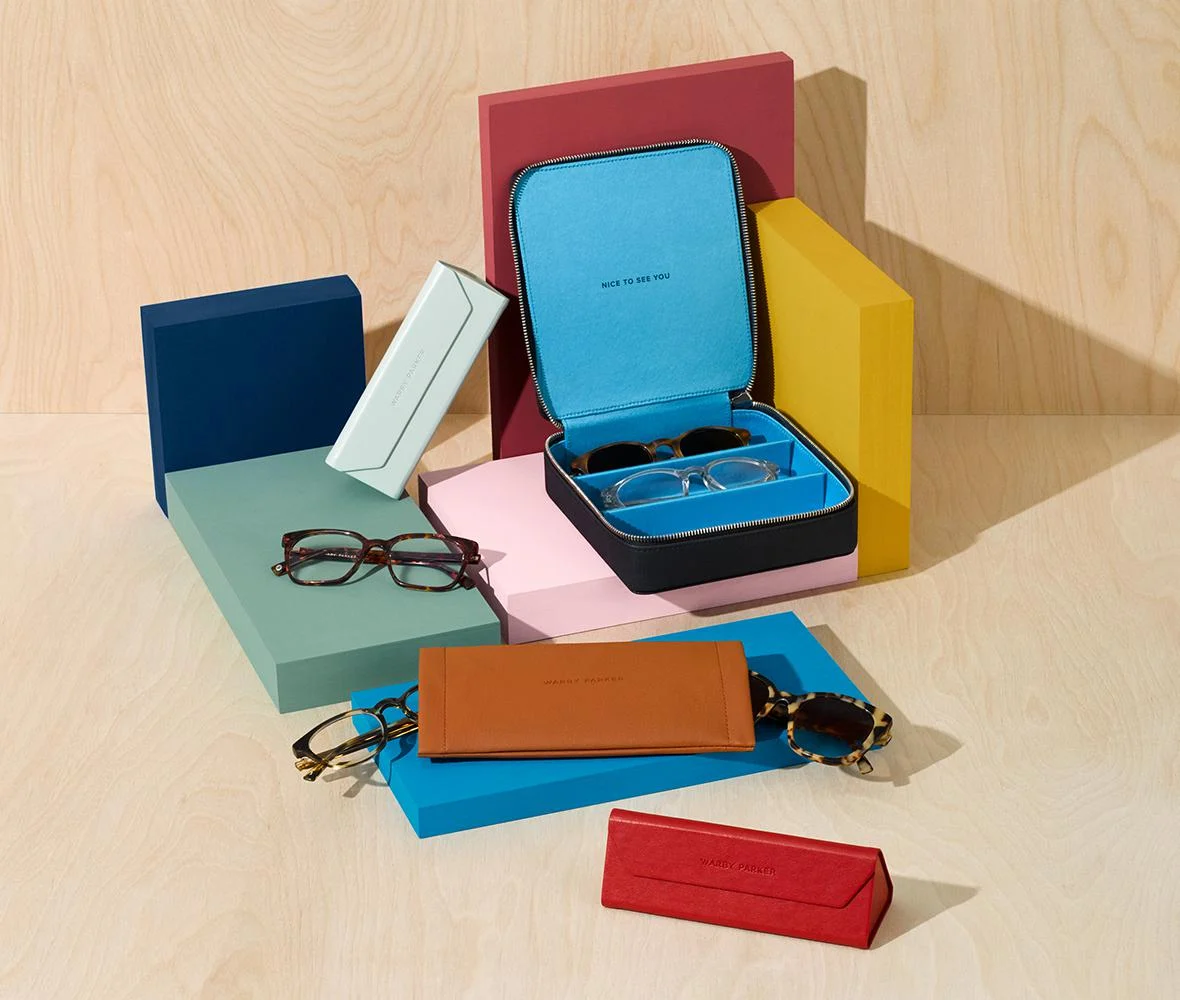
Acetate—or, more specifically, cellulose acetate—is the caviar of plastics. It’s durable, hypoallergenic, and capable of holding exceptionally rich colors, which makes it an ideal material for eyeglasses. It’s our signature material.
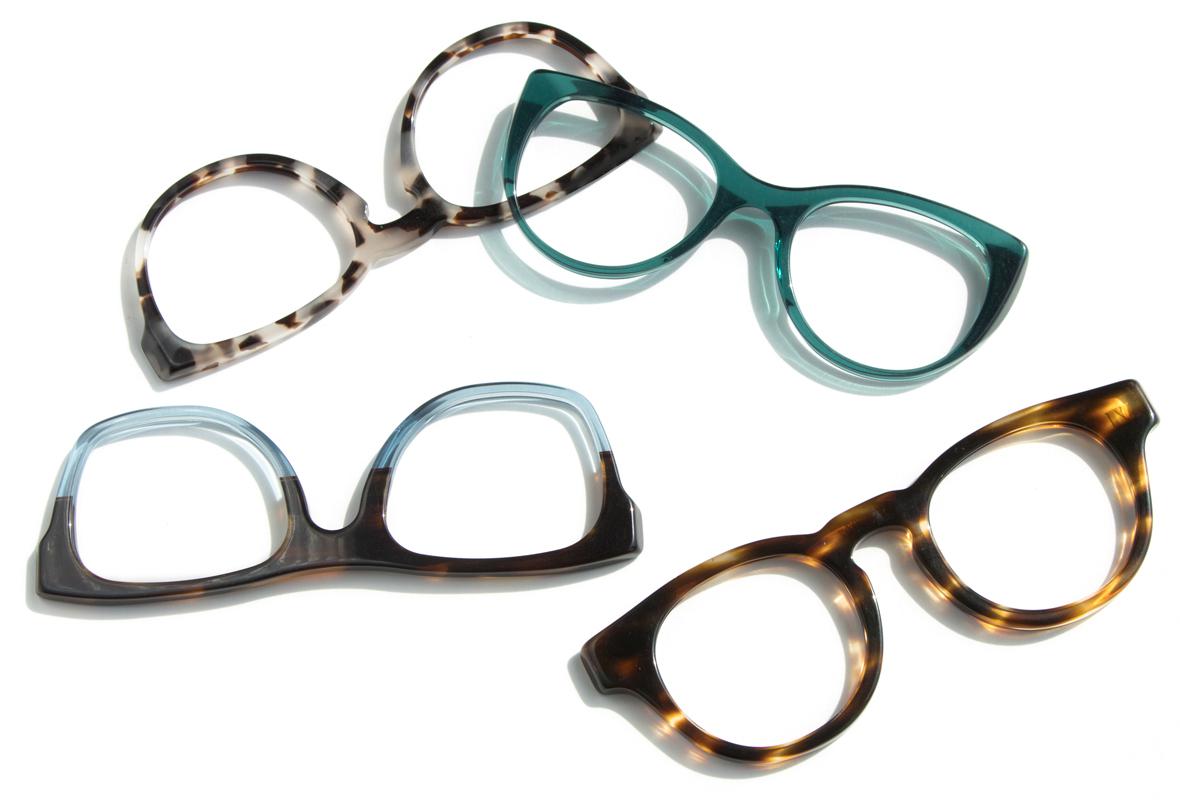
This is a piece of information that appears on your prescription. It refers to the added magnification power you need to see clearly close-up.
Amblyopia is an inability to see clearly through one eye. It arises during childhood, typically when the nerve pathway between the brain and eye doesn’t develop quite normally, and for this reason the eye doesn’t “learn” to see correctly. Amblyopia is sometimes referred to as “lazy eye”…but it’s not very nice to call anything “lazy,” including your eye. So we prefer the scientific term.
All Warby Parker lenses are coated with a high-quality super-hydrophobic treatment. This step is especially important for those who work with computers—and it also keeps your glasses looking so fresh ‘n so clean-clean.
Also known as the temple, this is the part of your glasses that runs alongside your head and holds them in place.

Astigmatism is a common optical condition which results in blurry vision (and, if uncorrected, sometimes a headache). It results when the curve of your cornea is slightly irregular in shape, which prevents light from focusing properly on the back of the eye. This prevents you from seeing with perfect sharpness. The good news: A pair of glasses can help compensate for astigmatism.
This is a machine used to determine what level of vision correction is right for you. In simple terms, it shines light into your eye and measures how the light changes. An autorefractor helps provide an ultra-accurate baseline for ophthalmologists or optometrists to work from.
“Axis” is the number on your prescription that determines the direction of your astigmatism correction. The cylinder and the axis always go together—you can’t have one without the other!
Sometimes base curve is also included on a contact lens prescription which helps the lens fit properly. This measurement always falls between the numbers 8 and 10.
Firstly, blue light is a subset of light within the visible light spectrum; it’s emitted by the sun as well as screens on computers, phones, and other electronic devices. Our blue-light-filtering lenses, well, they filter out a higher percentage of blue light than any other optical lenses we offer. Add blue-light-filtering lenses to any frame for $50.
Cat-eye frames are a shape of frame that swoop upwards, like…um…cats’ eyes. (You saw that coming.)
A woman named Altina Schinasi Miranda is credited with inventing the first cat-eye-like shape in the 1930s. Miranda was a window display designer in Manhattan who thought most glasses were hideous and unsuitable for fashionable ladies. Inspired by harlequin masks she’d seen in Venice, Miranda got creative and designed a pair of glasses that mimicked the masks. (She snipped the first prototypes out of paper.) Fast-forward a few years and the new style of glasses is suddenly in vogue AND in Vogue. Marilyn Monroe wore them, Nina Simone wore them, Brigitte Bardot wore them…all the cool girls. Now we call them cat-eye frames. You can wear them even if you’re more of a dog person. It’s allowed.
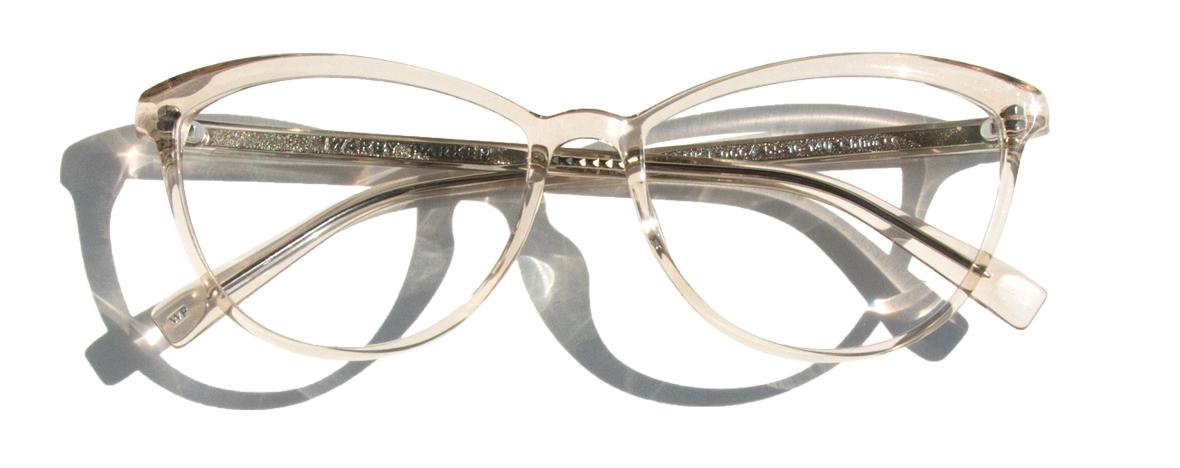
See acetate.
Individuals with color blindness perceive colors differently from the way most of us do. It’s very common, and the degree of color blindness can range from mild to severe. (Those with very mild color blindness might not even know that they have it.) It’s usually a genetic condition, meaning that you are born with it. Because inherited color blindness is carried on the X chromosome, it affects more men than women. It is estimated that about 8% of all men and 0.5% of all women have some form of colorblindness.
The colossal squid is a frightening globular invertebrate that lives in the deep ocean and is about twice the length of a school bus. Their eyes are bigger than footballs. (Creepy.) Even our widest frames will not fit this creature.
If you’re anything like us, you like to have options galore. In addition to our very own contact lens brand, Scout, we’re happy to offer a variety of contact lenses to accommodate a greater range of prescriptions and preferences.
This piece of information appears on your prescription. It refers to the lens power needed to correct for an astigmatism. The cylinder and axis always go together—you can’t have one without the other!
If you order a Home Try-On, you’ll receive glasses fitted with demo lenses. These lenses have no prescription—they’re for “demo purposes” only! (Like looking out of a window.) When you place an order, we’ll customize a fresh pair of glasses with your prescription.
The Department of Motor Vehicles, or DMV, is a place where people who love to wait in lines can meet and mingle with other people who are passionate about waiting in lines. Just kidding. (Sort of.) In order to drive a vehicle in the U.S., you must have a visual acuity of at least 20/40, with or without corrective lenses. Many DMVs allow you to take a vision test right at the office, but you can also get a vision test report completed by your friendly optometrist, optician, registered nurse, physician, etc. FYI: Our optometrists are happy to do this for you in select locations.
You may find a diameter measurement included on a contact lens prescription, which is just the width of a contact lens in millimeters. (Most contact lenses are between 13 and 15 mm wide.)
Eye care professionals will sometimes dilate your pupils during an exam to get a better look at your retina. This simply means that your pupils will be widened (or dilated), usually using special dilating eyedrops.
The downside of getting your eyes dilated is that it makes your vision blurry and your eyes extra-sensitive to light for a few hours, or sometimes a bit longer. Sunglasses help a bit. (Safety tip: It’s not a good idea to drive for several hours after your dilation.)
A diopter is a unit of measurement, like “gram” or “ounce.” Instead of measuring mass, however, it measures the refractive power of a lens—in other words, it measures optical power.
As you age, so do your eyes. (Ugh, why.) Because we are responsible upstanding citizens, we can’t start making your glasses without seeing your valid prescription with our own two eyes. That’s why it’s important to keep your prescription updated 🙂
After two years of researching, designing, and testing new widths, we developed a series of extended sizes—extra narrow, narrow, medium, wide, and extra wide—and applied them to our bestselling frames. In short, it means more fits for more faces.
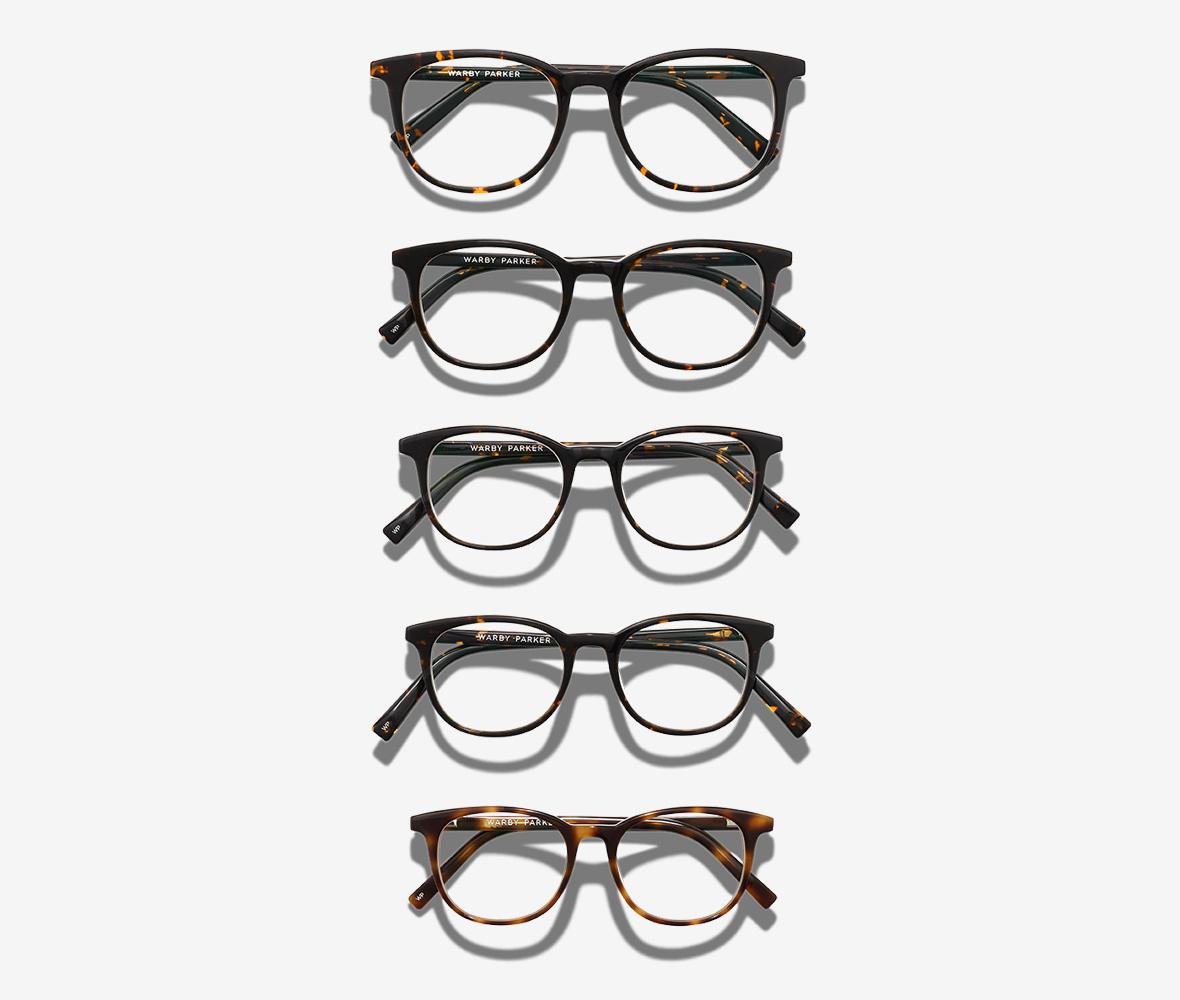
Eye drops = liquids that you apply to your eyeballs for various purposes. It takes some practice to apply eye drops, because putting fluid directly onto your eyeballs does not exactly feel natural. You can get different kinds of drops for different purposes: itchy eyes, dry eyes, etc. Some drops are medicated to treat glaucoma, eye infections, and other conditions. It’s best to ask your friendly doctor what drops are right for you.
The circular thingies on your face that give you an excuse to wear cool glasses. The eye is an insanely complex organ, but it helps to think of it like a camera: It has a lens, it collects incoming light, and it provides an image that your brain interprets.
You know when it’s New Year’s Day and you’re excited about your resolution to “be more healthy” and you do 100 vigorous sit-ups and the next day your stomach hurts and you decide to stop doing sit-ups forever? Eyestrain is like that, but for eyes. If you use your eyes intensely or in certain circumstances—like staring at your computer for too long, or reading a lot of small print—you may get eyestrain. If you have continual eyestrain, we recommend getting your vision checked (you might need glasses)!
The rim surrounding your frame’s lenses.
If you are farsighted, you have trouble seeing near objects, but you can see distant objects clearly. (We know, we know—the name is confusing.) The medical term for this is hyperopia.
Do your frames fit? Here’s how to tell.
A flexible spending account (FSA to save breath) is a savings program that allows you to set aside pre-tax money for specific health care expenses—prescription eyeglasses, prescription sunglasses, eye exams, and more included! Your FSA may expire at the end of the year, so best check those balances and get a little something come December.
We like to help people see, so we figured you might like helping a loved one into some new eyewear. Our gift cards come in several denominations tailored to the prices of our frames, ranging from halfway to a new pair of single-vision eyeglasses all the way to a full pair of standard progressives. Take your pick!
This…this is what we sell. Glasses.
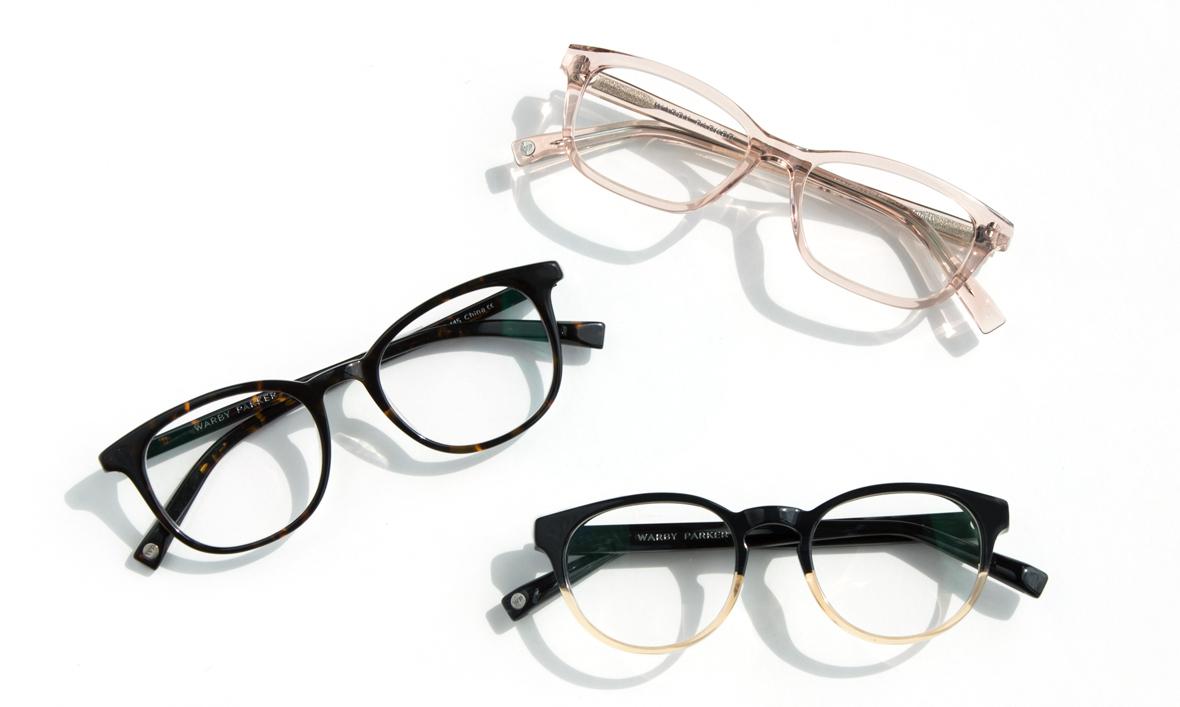
Googly eyes are little plastic craft supplies that look like eyeballs. They have literally endless uses and are always funny. Googly eyes pair well with sock puppets.
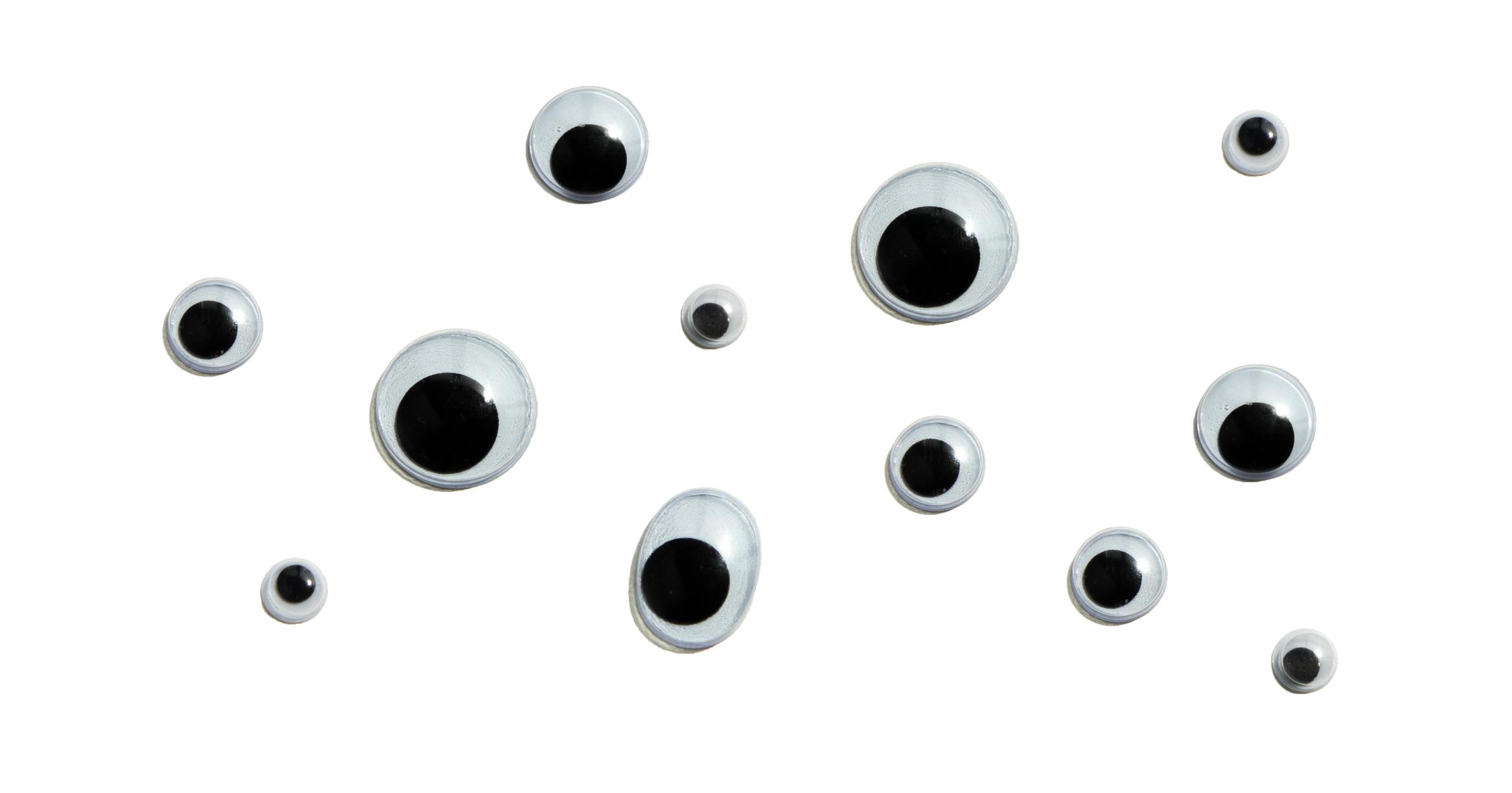
Sort of like FSAs, health spending accounts (or HSA for short) allow you to set aside pre-tax money to use on approved health care expenses like, say, prescription glasses or prescription sunglasses, contacts, or even the Clean my Lenses Kit. Added perk: these never expire!
“High-index lens” is a fancy phrase for a type of thin plastic lens that comes in handy for some higher prescriptions. Remember the kid from The Sandlot? High-index lenses make it possible to not wear glasses like that. (Although high-index lenses are not recommended for children 16 and under.)
Our Home Try-On program lets you try out five frames at home for five days—for free. When you find one you love, check out with your prescription and we’ll send you a fresh pair. (It’s as easy as it sounds.) Get personalized recommendations from this quick quiz, or learn more about the program here.
“Hydrophobic” describes something that does not like water. We treat our lenses with superhydrophobic coatings, which repel moisture to help prevent smudging. Other things that are hydrophobic: cats.
See farsightedness.
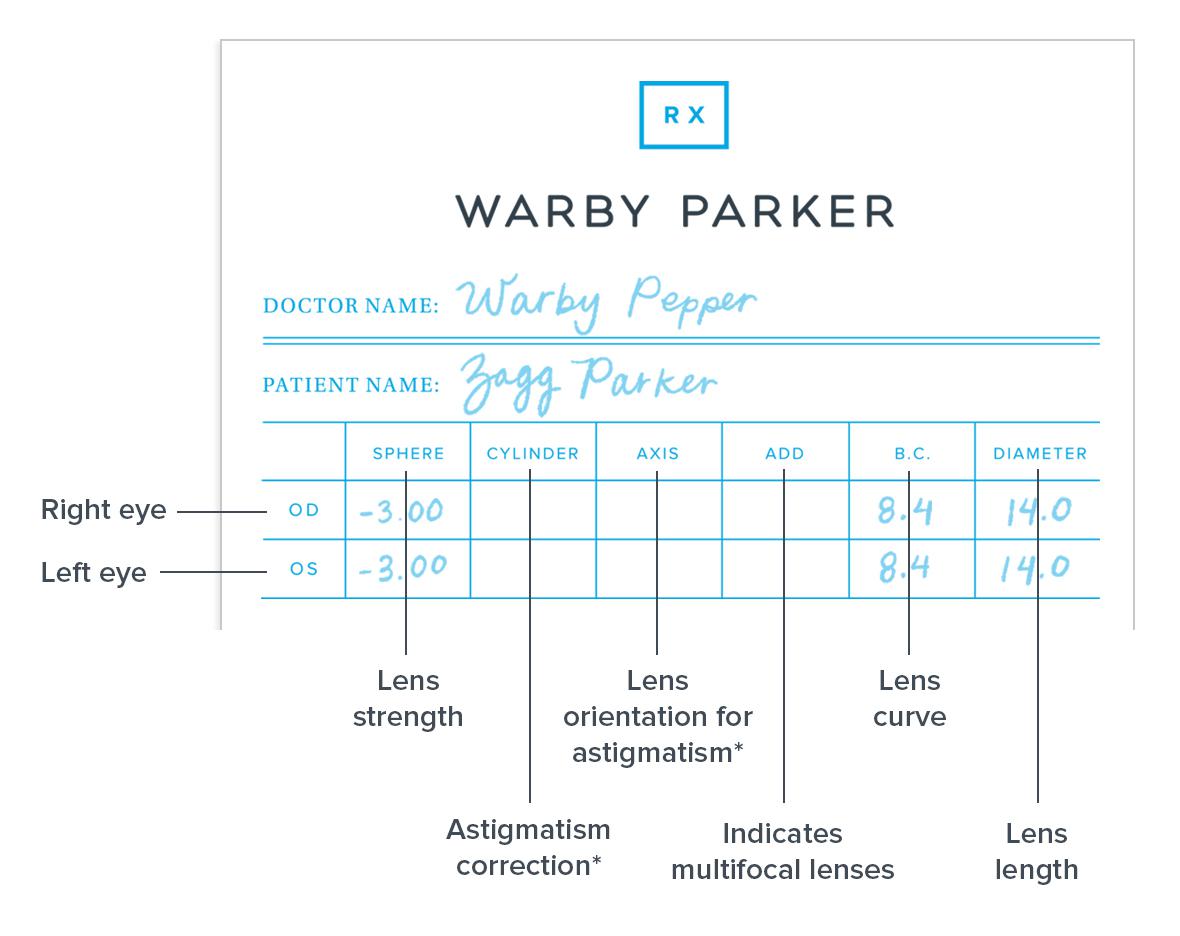
We have one of those. Download it here.
A great way to help cover the cost of prescription glasses, prescription sunglasses, contacts, and. Learn more here!
This is what you’ll do when you put on your first pair of Warby Parker sunglasses.
A keyhole bridge looks like a very simplified keyhole. (You knew that was coming.) It’s lightly curved; it has a vintage look; it’s versatile. We likey.
In addition to being a good name for a band (that’s a free idea, by the way), the lacrimal caruncle is the little pink spot at the inner corner of your eye. A fun thing to say to someone when they wake up in the morning is, “You have a crusty deposit in your lacrimal caruncle.”
Light-responsive lenses begin to darken when exposed to UV rays (in both direct and indirect light)—then fade back to clear indoors. The technology is built into the lenses, so the treatment won’t rub or peel off. They’re a particularly useful way to reduce the amount of frames you need to carry.
Low Bridge Fit frames are crafted for those with low nose bridges (if the bridge of your nose sits level with or below your pupils), wide faces, and/or high cheekbones. These are sometimes called “Asian fit” glasses.
What makes them fit well? Glad you asked—a few things. First, we outfit ours with nose pads designed to sit on the sides of the nose, ensuring that your frames rest with zero tension and zero slippage. Second, we adjust the tilt of the lens to provide more space between your cheekbones and frames. Third, we subtly arch the temples (frame arms) for a roomier fit that banishes pinching. (Toodle-oo, pinching!)
Some mixed things are bad (like mixed messages). Some mixed things are good (like mixed nuts). Our Mixed Material frames definitely belong to the second category. These frames include densely-hued acetate and metal flourishes. Yum.
Thought to derive from the Latin monoculus (“one-eyed”), the monocle rose to popularity in the mid-19th century. Like a delicate ocular pet, the lens was attached to a wearer’s clothing by means of a silk string or a chain. Early frames were made of luxury materials, such as bone or horn.
Like all costly technologies, the monocle quickly become a status symbol. The look was favored by bankers, lawyers, and gentleman horse breeders—the kinds of men who sported orchids in their buttonholes and hats on their heads. Men with names like “Llewelyn.”
As monocles became the preferred accessory of 19th-century capitalists, they developed a sinister reputation. For its part, the medical establishment has always viewed monocles with skepticism. A Dr. Kitchiner denounced the monocle trend in 1824, calling it “mischievous.” To which we at Warby Parker can only reply—if being mischievous is so wrong, who among us would care to be right?
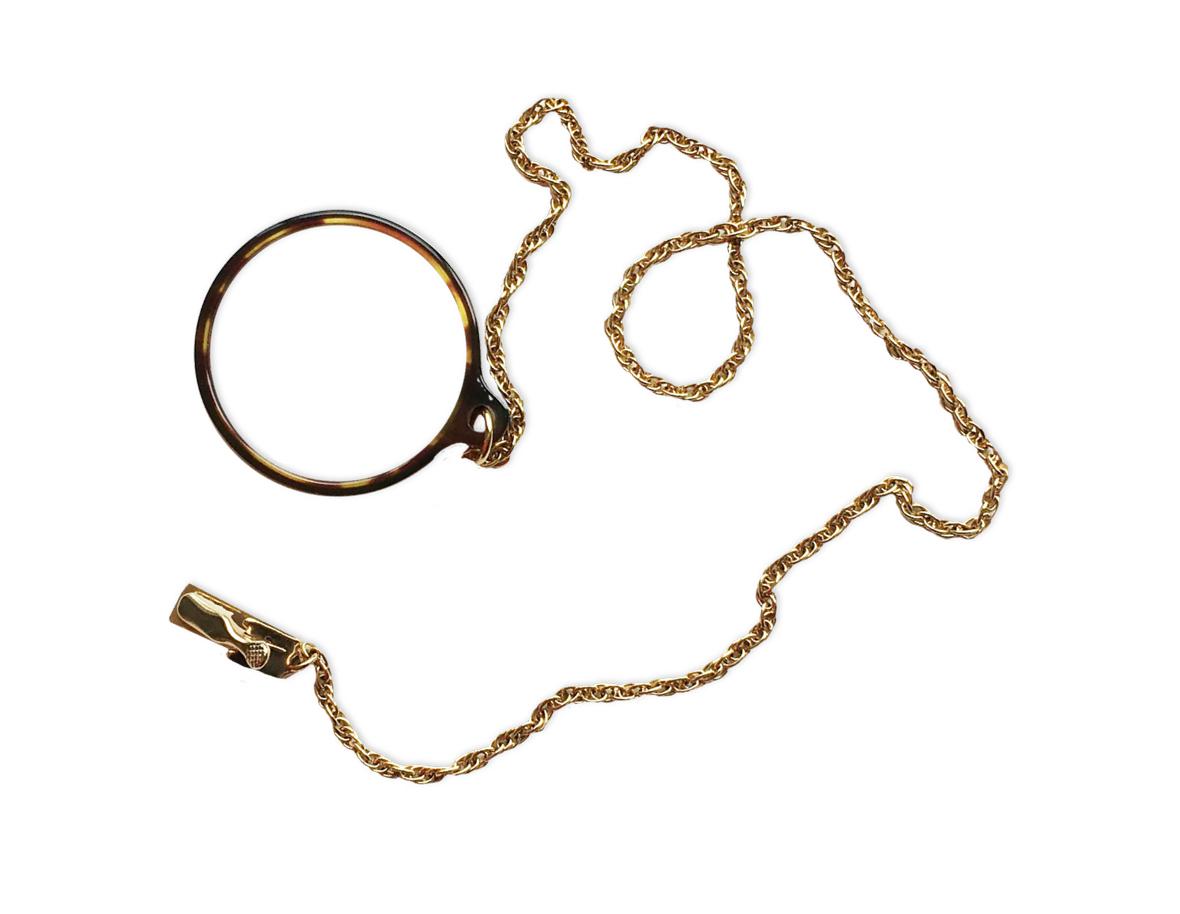
Monovision is sometimes prescribed in contacts. It’s a pretty neat refractive correction that works by making one lens for distance and the other for near vision.
See nearsightedness.
If you are nearsighted, you have trouble seeing distant objects. Another word for it is “myopia.” If you’re sitting in the back row of a movie theater and the screen is blurry? Yep, that would be nearsightedness. It’s pretty common.
“Nose bridge” refers to the slope of the nose in between your eyes. (Put your finger there. It’s a nice little area, isn’t it? Definitely an underrated body part.) A low nose bridge is where the bridge of your nose sits level with or below your pupils. People with low nose bridges often have wide faces and/or high cheekbones. (Tip: Low Bridge Fit frames minimize any pinching and prevent frames from sliding down your nose or resting on your cheeks. Which is fantastic, because no one on earth wants to be pinched by a pair of glasses.)
Twin pads that rest on the sides of your nose and ensure a snug fit.
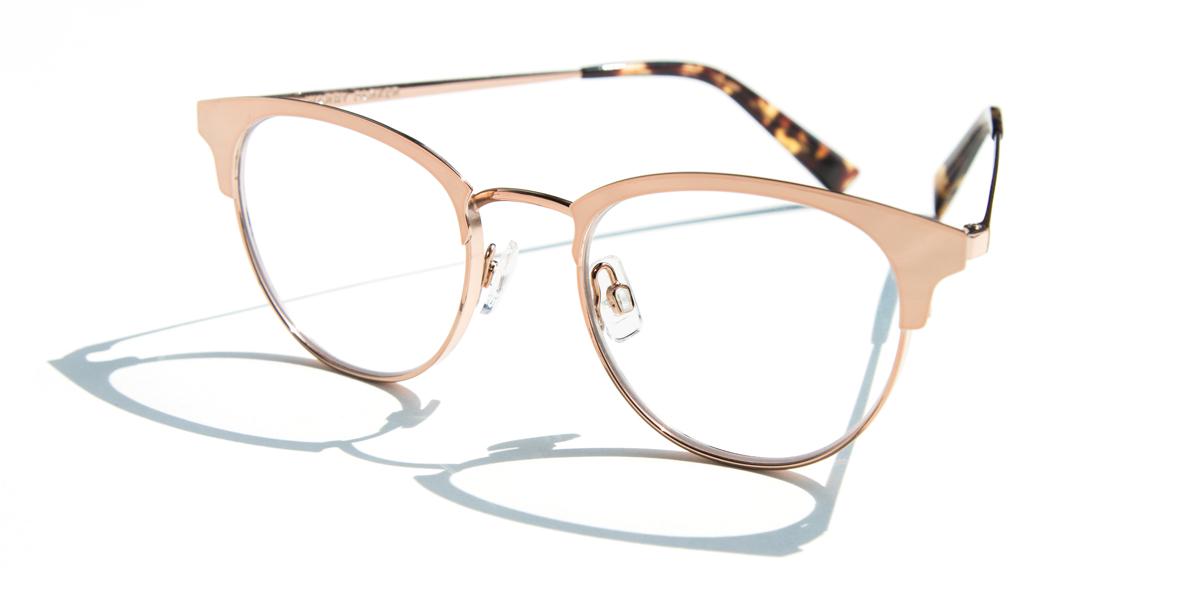
This abbreviation appears on your prescription. It stands for “oculus dexter,” which is “right eye” in Latin. Everything sounds cooler in Latin.
An optician is an eye care professional who is trained to interpret, fit, and dispense prescription eyewear. They don’t provide you with the prescription itself, but they make sure everything is up and running perfectly after you’ve gotten a prescription from an eye doc.
An optometrist is the doctor who gives you a prescription for glasses and/or contacts. They can also diagnose eye diseases and prescribe some medications.
In addition to being an incredibly hard word to spell, an ophthalmologist is a medical doctor who specializes in the treatment and diagnosis of eye diseases, as well as in eye surgery. This person can also prescribe medications, glasses, and contacts.
This abbreviation appears on your prescription. It stands for “oculus sinister,” which is “left eye” in Latin. (Cool.)
A phoropter is a big instrument that your doctor will use for refraction during an eye examination. It looks like a science-fiction mask. (VERY cool.)
This is an old-fashioned style of glasses you may recognize from old paintings or photographs of Theodore Roosevelt. “Pince-nez” means “pinch-nose” in French, which is appropriate because these frames stay put by pinching the nose. Sir Arthur Conan Doyle wrote a story called “The Adventure of the Golden Pince-Nez,” which we might consider the cultural apex of this style.
“Plano” refers to a lens without a prescription. Just a plain ole’ plano.
Polarized lenses eliminate glare, making it easier for you to see without straining your eyes. How do they work? Physics, punk! Light waves vibrate in different directions, and most of the light waves that cause “glare”—those shiny reflections off a pool or a highway—are horizontal. Polarized sunglasses have teensy vertical filters that prevent horizontal light waves from entering. Voilà: no glare. It’s so simple, yet so cool.
Polycarbonate is an über tough transparent plastic with exceptional impact resistance. (It won’t break if you drop it, unlike eggs, crystal vases, fine china, water balloons, etc.). All standard Warby Parker optical lenses are fashioned from polycarbonate.
A prescription is a formula for making the best pair of eyeglasses for you. Think of it like a recipe with different ingredients: You’ve got your sphere (to indicate the strength of the lens you need), your cylinder (which indicates the lens power needed to correct astigmatism), and your axis (which indicates where to place the lens correction for astigmatism), among other pieces of information.
This is a piece of information that may appear on your prescription. If your doctor includes a prism correction on your prescription, you’ll see a little triangle symbol next to it, like this: ∆
Progressive lenses are like a fun “two-for-one” deal, offering multiple focal corrections all in the same lens (distance correction on top, intermediate in the middle, and reading correction on bottom). This means you can see your whole field of vision without switching between multiple pairs of glasses. Party on.
See progressives.
“Pupil” is a fun word to say. It’s the part of your eye that light passes through—the little hole right smack in the middle. Humans have circular pupils, but a lot of animals have crazy-shaped pupils, like geckos. We’re not even sure how to describe the shape of a gecko pupil. It’s almost like a piece of beef jerky.
Anyhow, back to science. Your pupils expand and contract depending on the light conditions surrounding you. When light is scarce, your pupil expands; when the sun is blazing, your pupil contracts to limit the amount of light that enters. Like a camera aperture.
Your pupillary distance is…drumroll…the distance between your pupils! It’s a handy measurement that helps align your lenses to fit the frames you choose. Your pupillary distance can be measured in a number of ways—there’s even a device called a “pupillometer.” (Great word.)
In an ideal world, your eye doctor will include it on your prescription every time. But not all doctors do this. If your doctor forgets, you can always use our handy online tool to get your measurement.
Our program that provides free vision screenings, eye exams, and glasses to schoolchildren in need. In 2015, we got together with a number of organizations and local government agencies, like the Department of Education in New York City and the Department of Health in Baltimore, to bring vision care directly to children in their classrooms, where vision issues often first come to light.
Quinoa is a delicious and healthy food. We didn’t have any eye-related words that start with the letter “Q” so we’re going with quinoa, because otherwise the “Q” section will be lonely. Bon appétit.
Readers (or reading glasses) are glasses with non-prescription lenses that make it easier to read (or do anything that requires really good eyesight at close range). They’re available in various preset magnification strengths, which users can choose from to match their needs.
In science terms, refraction is the bending of any wave (but for our purposes, a light wave) as it passes from one medium into another. In eyewear terms, refraction refers to the process of determining your refractive error.
The retina is a light-sensing layer of tissue lining the inside of your eye. Think of it this way: If the eye is a camera, the retina is your photographic film.
Scout is our very own brand of daily contact lenses. They’re made from a super-moist material that resist drying for lasting hydration and comfort—and they incorporate Centraform technology, which results in a smooth edge design that reduces the likelihood you’ll feel the lens in your eye. For an added touch of convenience, each lens comes in an innovative, space-saving flat pack that’s easier to transport and store than a traditional contact blister pack. (And it uses almost 80% less packaging than traditional contact packs.) The flat pack design is also more hygienic in that it presents the outer surface of the lens facing up, reducing the need to touch the inner surface (i.e., you’re less likely to transfer bacteria and debris into your eye).
Oh, and you can order a trial pack that includes six days’ worth of contacts for only $5—and then receive $5 off your next Warby Parker order.
Segment height is one of the measurements used to create super-accurate progressive lenses. It’s a vertical measurement (in millimeters) that tells the lab where to start your progression. Sometimes we refer to it as “seg height,” just to be cool. 😎
Single vision lenses correct for one field of vision (usually for distance or reading).
This is your classic eye chart. You know, the one with the letters that go from big on top to maddeningly tiny on the bottom. It was invented in 1862 by a professor of ophthalmology in the Netherlands named Dr. Herman Snellen. Apparently it is the best-selling poster in America, which is either incredibly nerdy or ridiculously nerdy.
This is one piece of information that appears on your prescription. It indicates how strong your lens needs to be.
First of all, how many syllables does one word NEED? Save some syllables for the rest of us, sphygmomanometer!
A sphygmomanometer is an instrument used to test your blood pressure. It’s that inflatable rubber cuff that squeezes your upper arm in a somewhat uncomfortable fashion. (You know what we’re talking about.) Because eye doctors can sometimes detect signs of high blood pressure in your eyes, they may use a sphygmomanometer to get your blood pressure during an eye exam.
“Standard fit” frames are our alternative to Low Bridge Fit frames. Low Bridge Fit frames are crafted for those with low nose bridges (if the bridge of your nose sits level with or below your pupils), wide faces, and/or high cheekbones. If you don’t have these features, you’ll want to stick with “standard fit.”
A magical place where you can experience Warby Parker IRL. You’ll find artwork from artists we love, books from independent publishers, and lots and lots of glasses. They usually are designed to feel like a library because books and glasses just go together. (Use the hashtag #AtWarby if you come visit us!)
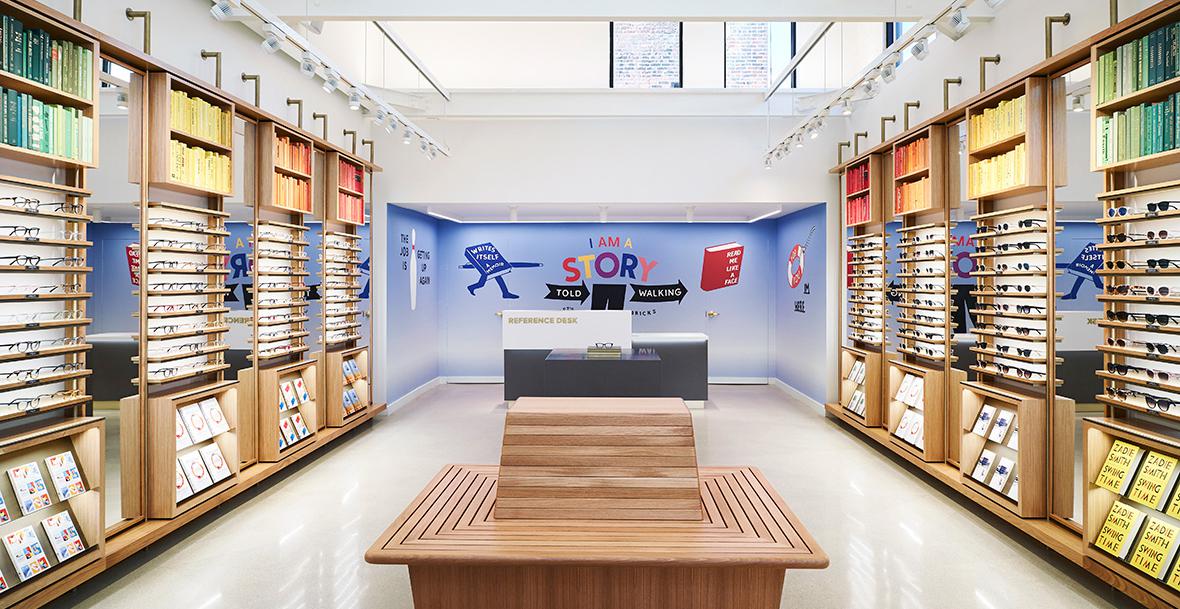
Also known as the arm, this is the part of your glasses that runs alongside your head and holds them in place.
Titanium is a strong, durable substance that holds up well under force. (Just like you.) We use it to make glasses because it has a high strength-to-weight ratio, which makes it ideal for an item that rests on your nose. Also: Titanium never rusts.
Its symbol is Ti, like the rapper.
Titanium was discovered in 1791. Other fun things that occurred in 1791: Vermont became a state, the guy who invented Morse code was born, and the world’s first Sunday newspaper was published. Yeah, it was a good year.
Geometry geniuses may remember that toric means having two independent curves instead of one. What’s this have to do with my eyes? you might ask. Well, toric contact lenses are used for people with astigmatism, so the prescription will have both a Cylinder (CYL) and an Axis value.
In the 19th century, tortoise shell was a prized material for all sorts of household objects, from combs to cigar boxes to spoons to paper cutters. Fancy people stored champagne in tortoise shell ice buckets. It made sense: Tortoise shell is a beautiful material, with complex marbled hues and a rich glow. Even the ancient Egyptians used it.
The problem is that tortoise shell originally came from an actual animal; specifically, the hawksbill sea turtle. This big guy grows to three feet long, has a cute little beak, and enjoys swimming among coral reefs and lagoons. In 1973 the Endangered Species Act was passed, which officially protected hawksbill sea turtles from being hunted. They’re still endangered though.
Here’s where it is important to note that our tortoise shell is NOT made from actual tortoises. We would never do that. Instead, ours is made of custom cellulose acetate. Our designers have a lot of fun concocting tortoise hues of every shade—with no cruelty involved.
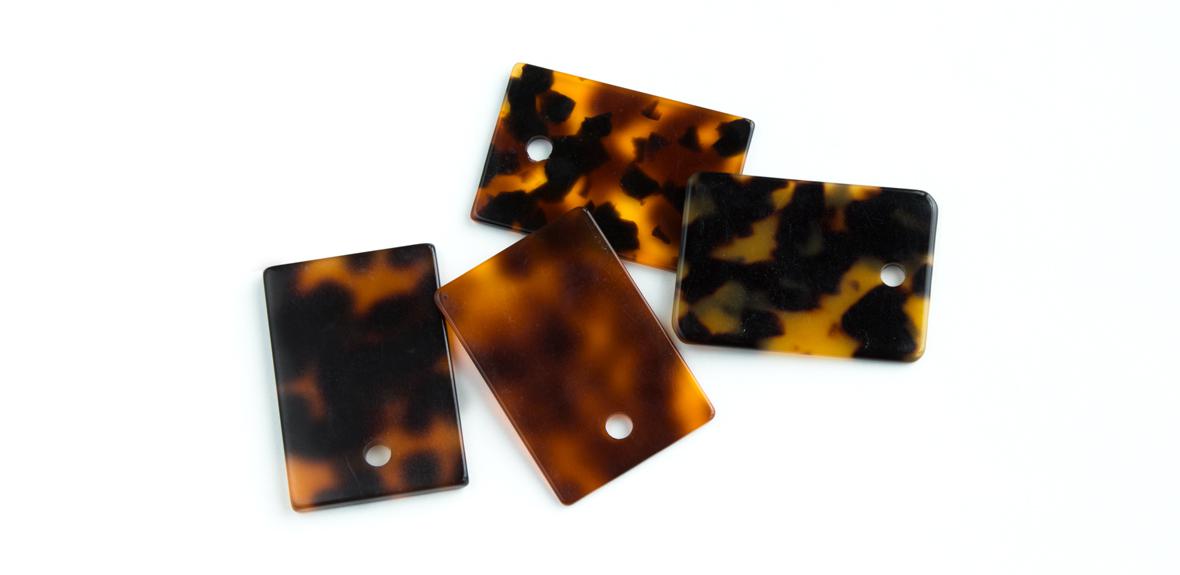
Ultraviolet light is a form of electromagnetic radiation that surrounds us, but it’s not visible with the human eye. Our main source of UV light is the sun. (If you’re overexposed to UV light, you can get a sunburn. Be safe out there, guys.)
UnitedHealthCare is one of the insurance providers we work with. Many folks with this insurance can purchase our eyeglasses or sunglasses, with prescription lenses included, for $25 or less!
Visual acuity is a schmancy way of saying “how well you can see.”
You may have heard the term “20/20 vision” tossed around. That term describes “normal” vision. If you have 20/20 vision, you can see at 20 feet what a person with normal vision would see at 20 feet. It’s possible to have better than average vision—some people, for example, have 20/15 vision, which means they can see at 20 feet what most people can only see at 15 feet! (#jealous).
Your visual field (or “field of vision”—same thing) is the area that you are able to see when your eyes are in one fixed position.
Virtual Try-On is a super futuristic tool within the Warby Parker app that lets you instantly see how you look in a pair of eyeglasses or sunglasses—down to the real color, texture, and size of each style—using just your phone. It’s available on iPhone X and above.
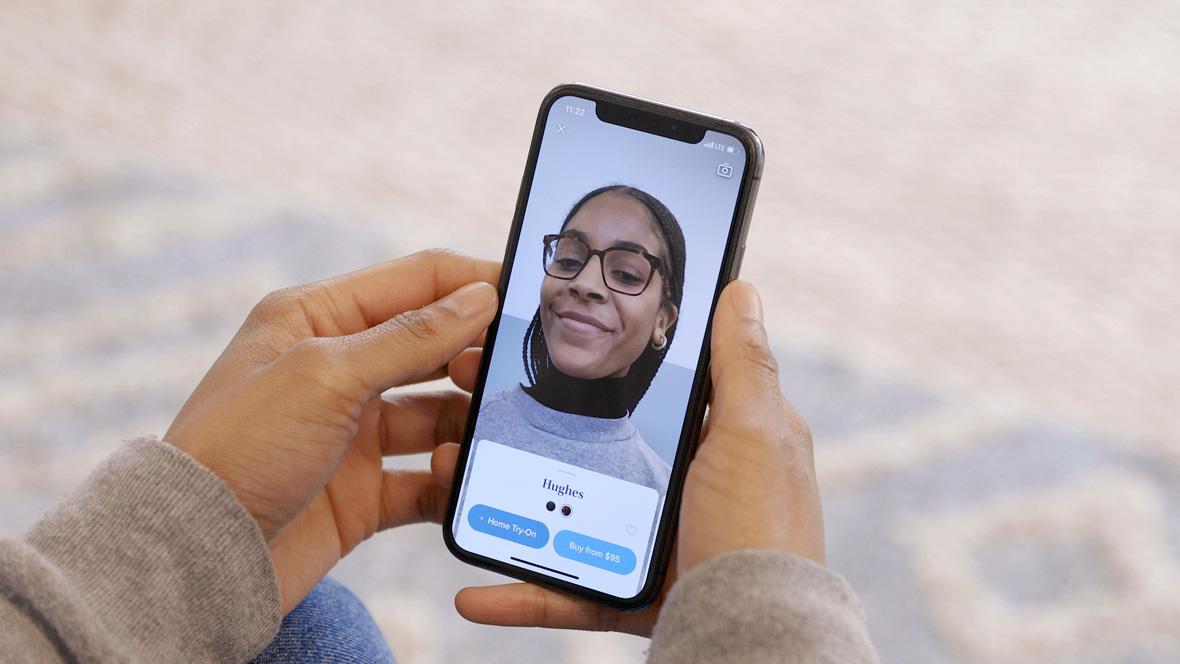
An app we made (and are very proud of). Our Virtual Vision Test is a telehealth service that, if you are eligible, allows an eye doctor to assess how you’re seeing through your current glasses or contacts and provide a renewed prescription. All with just an iPhone 6s or above!
We wish we had these for our glasses :/
These are not a thing.
This is what you will shout—possibly accompanied by a fist pump—when you put on your first pair of Warby Parker glasses. Good times.
This is what happens when you close your eyes in bed at night.
CATEGORIES